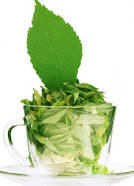It’s been called "The House Wine of the South," by Dolly Parton in the movie Steel Magnolias, which was never a truer statement. Talk about the South and sooner or later sweet tea comes to mind. In the South, tea is appropriate for all meals, and all occasions, and you start drinking it before you can walk. Sweet tea makes Southerners think of home, tradition, picnics, and hot afternoons “sippin” sweet tea on the front porch. Southern girls are taught how to make it by their mama’s thirst-quenching recipes.
Until the
1900s, iced tea was made from green tea leaves rather than black tea leaves. The oldest recipe in print was when sugar was first added by a housewife
and socialite named Marion Cabell Tyree from Charleston, South Carolina. Her
recipe was published in the cookbook, Housekeeping in Old Virginia in 1879.
While sweet
tea remains a Southern delicacy, originally Southern-style sweet tea was made by
dissolving cups of sugar in batches of boiling water in which green tea leaves
were steeped. Once the water cooled and the leaves were removed, the tea was
ready to be served.
But depending on the amount of
sugar dissolved, the original sweet tea of the 18th and early
19th centuries had a sticky—simple syrup taste that was too
sweet. That’s when alcoholic “Green Tea Punches” became popular among the
British aristocracy. Then southerners created a “Planter’s Punch” made of sweet
green tea with pineapple, and citrus juices, and cut with near-lethal amounts
of rum, whiskey, and bourbon to tolerate the sweetness.
By the late 1820s, America’s love affair with a “strong drink” began to cool as a growing number of Americans began identifying as “Teetotalers,” advocating against alcoholic beverages. Iced tea was at the top of that list and the South preferred sweet tea sans the alcohol.
1904 St. Louis World's Fair - Cold Black Tea Takes Center Stage
Thanks to the 1904 World’s Fair, there was a lift-off in the popularity of iced tea as patrons searched for a cold beverage due to the summer heat. That’s when Englishman, Richard Blechynden who was selling hot black tea at the fair realized no one was buying his drink due to the intense heat. So, he began running the tea through iced lead pipes and served the beverage to people walking through the fair. Because of this, it changed the way Americans thought of tea, thus popularizing black tea in everyday households.
World War II - Tea Importation Cut off
A British soldier with the 2/7th Middlesex Regiment shares a cup of tea with an American infantryman in the Anzio bridgehead, on Feb 10, 1944.
Tea Stats - Over 1,000 Varieties
Today, there are over 1,000 varieties of tea, most classified as white, green, oolong, and black. Tea is the most widely consumed beverage in the world next to water and can be found in almost 80% of U.S. households. It's the only beverage served hot or iced, anytime, anywhere for any occasion. On any given day, over 159 million Americans are drinking tea and 75-80% of it is iced.
Aside from a frosty beer, no
drink quenches a thirst like a glass of iced tea. In the South, it’s served
sweet and unsweetened. But in the Northeast, Midwest, or West iced tea is
usually served black—meaning unsweetened.
As we approach National Iced Day on June 10 & National Sweet Tea Day on August 21, rest assured that Southerners will be drinking it with plenty of sugar and by the gallon. Whether using black leaves or green leaves, iced tea will flow freely this summer, helping Southerners to cool down from high temperatures.









